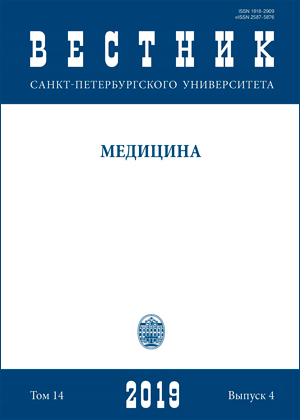Clinical experience of dispensary observation for ten thousand patients with Hashimoto’s autoimmune thyroiditis: Some features of aetiology, manifestations, treatment and comorbidity*
DOI:
https://doi.org/10.21638/spbu11.2019.422Abstract
Chronic autoimmune thyroiditis is the most common autoimmune disease and the main cause of hypothyroidism in the world. From March 14, 2011 to present we have systematically monitored in our outpatient dispensary center over 10,000 persons aged 1 year to 87 years with a newly diagnosed autoimmune thyroiditis (having totally ≈19,500 of their dynamic observations). In this article we address some features of autoimmune thyroiditis, namely aetiology (possible genetic predisposition and the role of some triggers, including excessive iodine intake), early manifestations of hypothyroidism, comorbidity (such as stigmata of non-syndromal marfanoid phenotype, metabolic syndrome, pituitary prolactinomas, lymphomas and some other malignancies) and treatment strategy (the proper time to start therapy, adjustment of the doses of Levothyroxine, monitoring follow-up dinamics of the disease and possible
complications of the therapy). Hashimoto’s thyroiditis in our experience looks like important cause of hyperprolactinemia and female/male infertility and essential prerequisite of early adolescent metabolic syndrome, causing precaucious metabolic senescence in subsequent life.
Keywords:
Hashimoto’s autoimmune thyroiditis, iodine, hyperprolactinemia, hypothyroidism, obesity with rose strias, marfanoid phenotype, metabolic syndrome, infertility, levothyroxine
Downloads
References
References
Downloads
Published
How to Cite
Issue
Section
License
Articles of "Vestnik of Saint Petersburg University. Medicine" are open access distributed under the terms of the License Agreement with Saint Petersburg State University, which permits to the authors unrestricted distribution and self-archiving free of charge.




